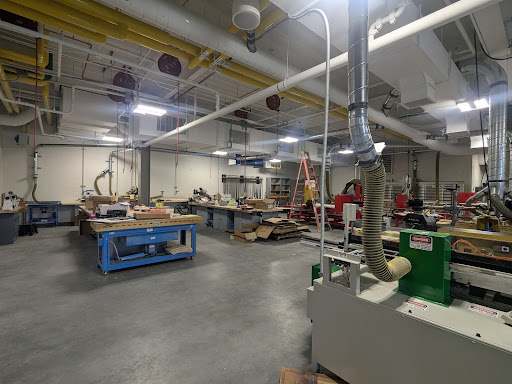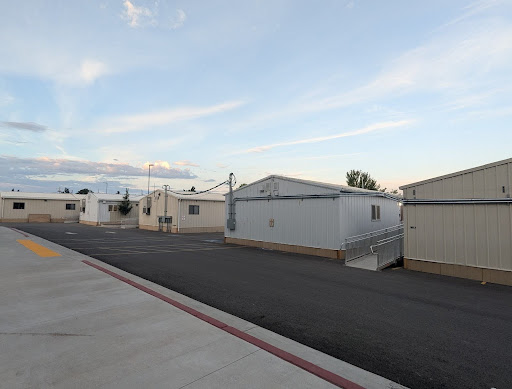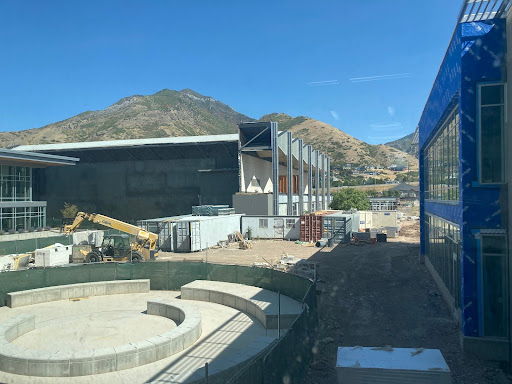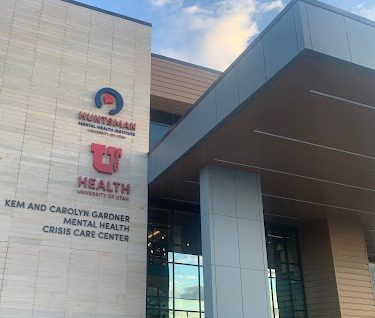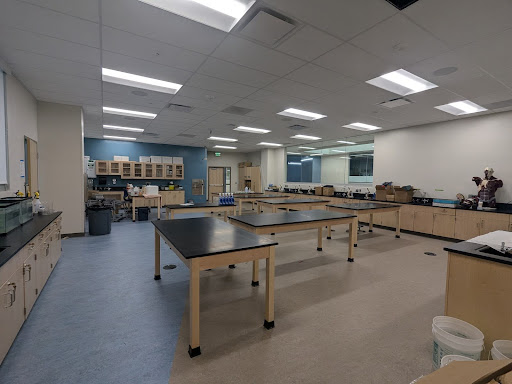
It’s the beginning of school, and the teachers at Skyline High School have varied first impressions on the new arts, social studies, and science classrooms and labs.
After transitioning into a new school building at the end of the summer, many teachers moved from relocatable classrooms to brand-new classrooms in the new building. In contrast, others moved from classrooms to relocatables. Additionally, many science teachers now have access to newer shared labs, and a new wood shop opens the floor to more hands-on work-shops.
The teachers who were relocated into the new building have mixed feelings about the classrooms they were given. Taylor Williams, an arts teacher, said, “[My favorite part of this classroom] is, I think, all the natural light that comes in from the windows. The portable one […] had some windows, but not like my wall of windows over here. And just how big it is.” She also brings up her proximity to other art teachers, “Being close to the other art rooms, we can share supplies […] and I have access right to the kiln.”
However, the new classroom does have some downsides. “It’s not really finished, or… ready yet,” Williams explained. “One of the sinks still doesn’t work, something from the ceiling drips, I can’t control the temperature, so it’s either really cold or really hot.”
Despite the problems of the classroom, Williams thinks the new classroom will impact students and learning positively, saying, “The layout is […] better, so I can interact with people a lot more easily.” She goes on to say that, “In the portable, it was—my desk was at one end, and then the whole rest of the portable stretched away, and it could be hard to get to everyone or see what was happening.” She mentions the fact that, “we […] haven’t had enough time in here for it to really impact learning yet, but I think it will be good things.”
The old relocatable classrooms had many issues, such as being isolated from the main building, smaller classrooms, tiny windows, and the feeling of being cramped. Many teachers enjoy the new classrooms despite their problems.
James Camargo, the drawing teacher, expresses his thoughts on the new building compared to his old relocatable classroom. “The portable that I was in was tiny. In this [new classroom], I just have a lot more space to move around. The ceilings are higher; it just feels like a more spacious area that I can fit everything in. Camargo said, “I can […] move around the classrooms and help students. I really like the space. I also like the windows.”
James also brings up that, “My portable had tiny windows; it’s […] nice to have some natural light. And […] just having it feel clean and new. […] Just being in an old building—some old buildings are really nice—but […] having it clean and new and fresh, being able to be hang my posters. […] It has a different feeling to it.”
Another teacher being introduced to a new room is woods teacher Sarah Rowe, who once occupied a relocatable classroom and woodroom. Rowe looks forward to using the new lab. “The thing I’m looking most forward to is a brand new shop. The school district has spent so much money on this amazing facility,” she said. The excitement doesn’t just end there: the new technology will open the door to a higher quality of learning. Rowe said, “I think [the new wood room] is going to improve [the students’] learning. There’s a lot more that we can do with the technology that we have now.” The new technology and working environment could be a big contributing factor to the overall quality of the class, improving learning as well as providing a faster-paced lesson plan. “My projects have changed with that and it’ll be easier to make and faster to make […] So what would have taken us probably four weeks will take a snap two weeks.”
On the flip side, some teachers have moved into a relocatable from a traditional classroom. One of these teachers is social studies teacher Timothy Henry, who acknowledges both the positives and negatives about being in a relocatable. Henry said, “I like that I can control […] my climate. This space is a little bit bigger than the previous room, so that’s an added bonus. Downsides: […] the walk between us and the main building is more difficult. […] I worry about [if students can] get in here on time; […] I’m being very flexible in that regard.” Despite the room change, Henry tries to maintain a good attitude on the situation, saying, “They’ve given me a place to do my job and so […] I’m gonna do my best at it.”
There has definitely been a lot going on with relocatables and teachers this year, but it hasn’t been just the once-relocatable rooms that have seen massive upgrades; The school’s science labs have also experienced big changes. Eric Dalley, a science teacher, details his experience moving into a new classroom, but also experiencing a modern lab-room; he is mostly pleased with the teacher-to-lab ratio. “[Because of the teacher-to-lab ratio] I can do more labs! […] That’s what I like to do,” Dalley said. He also emphasized the placement of the lab, saying, “The lab is adjacent to the classroom, so it makes it easier to transition to a lab. We don’t have to walk down the hallway… it used to be those walks to the lab would be a little bit of a disruption.” Dalley finds his new place of teaching to be wonderful. “[This area] is just a much more pleasant place to teach. I’ve got a giant window, my wall is a window! […] It brightens your mood, really, when you have these kinds of views in this kind of natural light.”
Ultimately, however, it is not fancy-modern rooms or new high class tech that makes Skyline great. Dalley puts it best when he said, “Skyline was Skyline before the new building. What makes Skyline great is the students.”
